#late gothic
Explore tagged Tumblr posts
Text

The Devil Shows Saint Augustine the Book of Vices by Michael Pacher, 1480.
#classic art#painting#michael pacher#austrian artist#15th century#gothic art#late gothic#christian art#saints#augustine of hippo#clergy#devil#books#street
149 notes
·
View notes
Text
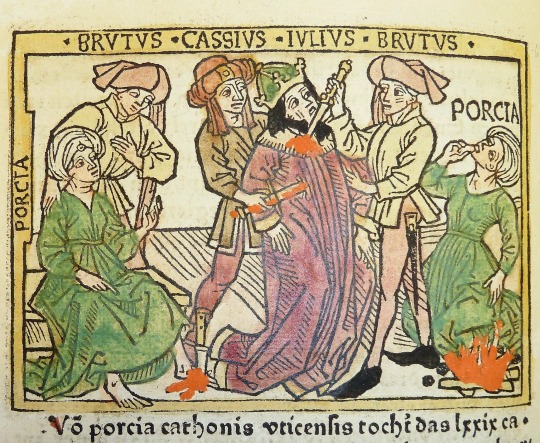
The Murder of Julius Caesar from Boccaccio's De mulieribus claris, German, ca. 1474
271 notes
·
View notes
Text

In the style (and perhaps from the workshop) of Tilman Riemenschneider Sculpture representing a cephalophore, possible St. Denis
Polychrome lime wood, 110 x 37 x 14 cm, ca. 1480
#tilman riemenschneider#saint#denis#martyr#martyrdom#cephalophore#15th century#late gothic#northern renaissance#sculpture
59 notes
·
View notes
Text
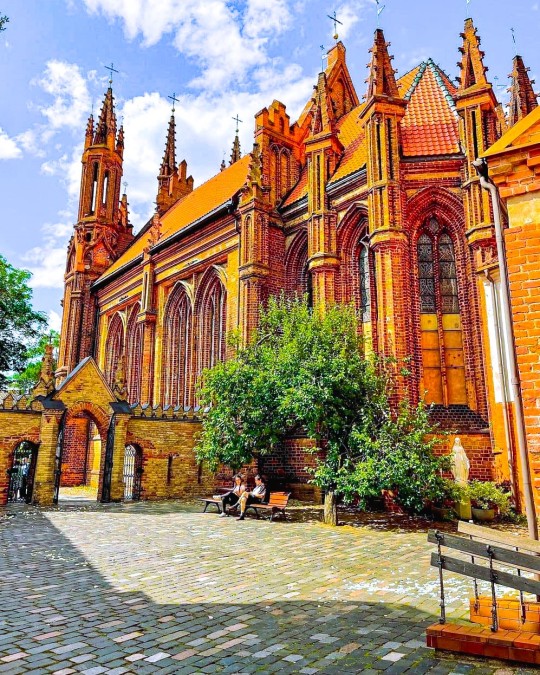
St. Anne's Church, Vilnius, Lithuania: St. Anne's Church is a Roman Catholic church in Vilnius' Old Town, on the right bank of the Vilnia River established circa 1495–1500. It is a prominent example of both Flamboyant Gothic and Brick Gothic styles. Wikipedia
#Church of St. Anne#St. Anne's Church#Roman Catholic#Late Gothic#Brick Gothic#Vilnius#Lithuania#europe
98 notes
·
View notes
Text

THE MORGAN BLACK HOURS
The Black Hours is an illuminated book of hours completed in Bruges between 1460 and 1475. It consists of 121 pages (leaves), with Latin text written in Gothic minuscule script. The words are arranged in rows of fourteen lines and follow the Roman version of the texts. The lettering is inscribed in silver and gold and placed within borders ornamented with flowers, foliage and grotesques, on pages dyed a deep blueish black. It contains fourteen full-page miniatures and opens with the months of the liturgical calendar followed by the Hours of the Virgin, and ends with the Office of the Dead.
The anonymous painter of the Black Hours is an artist whose style depended mainly upon that of Willem Vrelant, one of the dominant illuminators working in Bruges from the late 1450s until his death in 1481. As in the work of Vrelant, figures in angular drapery move somewhat stiffly in shallowly defined spaces. The men's flat faces are dominated by large noses.
Only seven copies exist. The one shown is held by the Morgan Library. [View large]

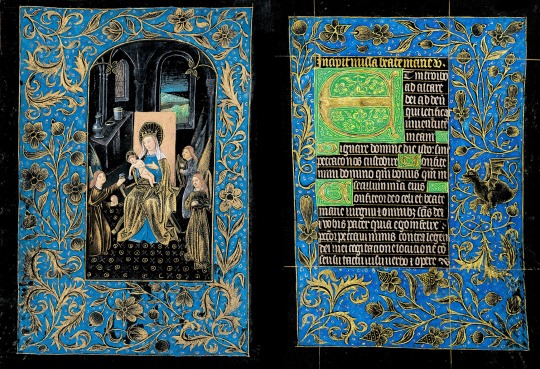

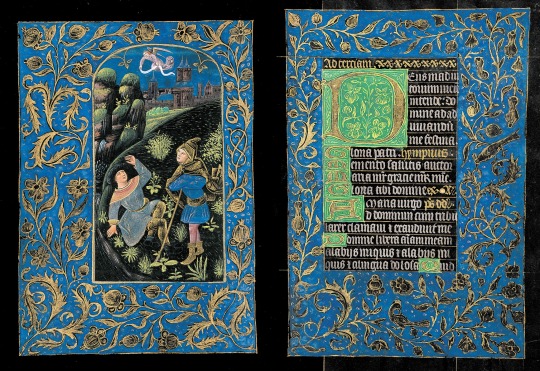
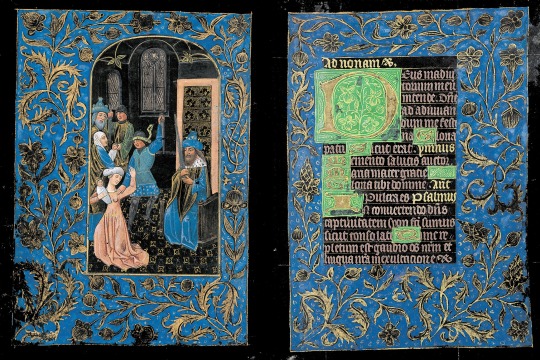

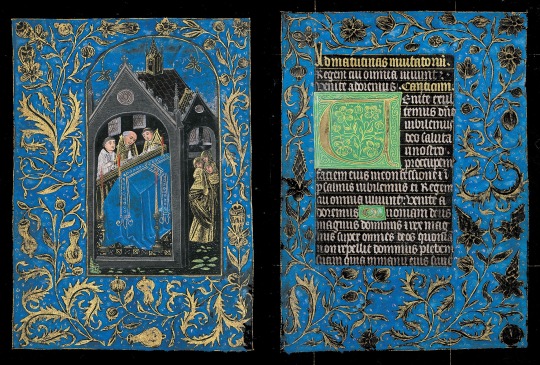
The Morgan Library
source
#beautiful books#book blog#books books books#book cover#books#illuminated manuscript#book of hours#late gothic#book design#book binding#15th century#black book
177 notes
·
View notes
Text

St George and the Dragon | San Giorgio e il Drago
by Carlo Crivelli
#carlo crivelli#art#knight#knights#dragon#dragons#history#medieval#europe#european#middle ages#chivalry#chivalric romance#landscape#castle#renaissance#late gothic#gothic#italy#lance#joust#spear#sword#swords
112 notes
·
View notes
Photo


Prayer Nut with the Nativity and the Adoration of the Magi, attributed to the workshop of Adam Dircksz
Netherlandish, c. 1500-1530
boxwood, silver, and gold
Rijksmuseum
4K notes
·
View notes
Text

Atlanta miku lol. Inspired by the looks I often see at the Underground or at streetwear festivals.
ID: A drawing of Hatsune Miku as a black woman with long, curly hair in braids and afro puffs. She's wearing a black, pink, grey, and blue ensemble that mixes athletic gear and hip-hip inspired street clothes. A large pink tote bag is slung over one shoulder. She appears to be waving one arm while jogging. End ID.
#Shows up the party late with starbucks#I have a sketch for a southern gothic miku BUT THE LINEART IS NOT TURNING OUT LIKE I LIKE AND THAT MAKES ME SAD#miku#hatsune miku#my art#cultural miku#artists on tumblr
27K notes
·
View notes
Text
The Birth of the Virgin (around 1520), Jan de Beer.

El Nacimiento de la Virgen (hacia 1520), Jan de Beer.
The Annunciation (ca. 1520), Jan de Beer

La Anunciación (hacia 1520), Jan de Beer
Oil on panel, both measuring 111.5 x 131 cm. / Oleo sobre tabla, ambas miden 111,5 x 131 cm
(English / Español / Italiano)
Jan de Beer (1475–1528) was a painter active in the first third of the 16th century and one of the members of the group known as the Antwerp Mannerists. They were characterised by the great detail in the backgrounds of their compositions and the attitudes of their figures, with a style that combines elements of both late Gothic and Renaissance styles. These two works must have belonged to a larger ensemble representing different episodes from the life of the Virgin.
The first panel depicts an event that is not narrated in the Gospels, The Birth of the Virgin. It depicts Saint Anne praying in bed while the Virgin is in the arms of one of the midwives, whose canon, like that of the other figures, is highly stylised. The space is filled with objects that, if isolated, would constitute still lifes in themselves, such as the metal jug and basket in the foreground of both compositions.
The Annunciation has a clear narrative sense, as can be seen in the work utensils that the Virgin has abandoned on the ground before the arrival of the archangel Gabriel, as well as in the exterior seen through the window in which The Visitation is depicted. In this painting, as in the previous one, the objects in the rooms where the scenes are depicted are particularly striking, such as the vase of lilies in the centre of the composition.
------------------------------------------------------------------------------
Jan de Beer (1475–1528) fue un pintor activo en el primer tercio del siglo XVI y uno de los miembros del grupo conocido como los manieristas de Amberes. Estos se caracterizaron por un gran detallismo en los fondos de sus composiciones y por las actitudes de sus figuras, con un estilo donde confluyen elementos tanto del gótico final como renacentistas. Estas dos obras debieron pertenecer a un conjunto mayor, que representaría diferentes episodios de la vida de la Virgen.
En la primera de las tablas se nos muestra un hecho que no se narra en los evangelios, El Nacimiento de la Virgen. En ella se representa a santa Ana orando en la cama, mientras la Virgen está en brazos de una de las comadronas, cuyo canon, como el de las demás figuras, resulta muy estilizado. El espacio está repleto de objetos que constituirían -si se aislaran- bodegones en sí mismos, como la jarra metálica y el cesto que aparecen en primer término en ambas composiciones.
La Anunciación posee un claro sentido narrativo, como se evidencia en los utensilios de labor que la Virgen ha abandonado en el suelo ante la llegada del arcángel Gabriel, así como en el exterior visto a través de la ventana en el que se representa La Visitación. En este óleo, al igual que en el anterior, llaman poderosamente la atención los objetos que se encuentran en las estancias donde se desarrollan las escenas, como el jarrón con azucenas situado en el centro de la composición.
------------------------------------------------------------------------------
Jan de Beer (1475–1528) fu un pittore attivo nel primo terzo del XVI secolo e uno dei membri del gruppo noto come Manieristi di Anversa. Essi si caratterizzavano per il grande dettaglio degli sfondi delle loro composizioni e degli atteggiamenti delle loro figure, con uno stile che combinava elementi sia del tardo gotico che del rinascimento. Queste due opere dovevano appartenere a un gruppo più ampio, che rappresentava diversi episodi della vita della Vergine.
Il primo pannello raffigura un evento non narrato nei Vangeli, La nascita della Vergine. La tavola raffigura Sant'Anna che prega nel letto mentre la Vergine è tra le braccia di una delle levatrici, il cui canone, come quello delle altre figure, è molto stilizzato. Lo spazio è riempito da oggetti che, se isolati, costituirebbero nature morte a sé stanti, come la brocca e il cesto di metallo in primo piano in entrambe le composizioni.
L'Annunciazione ha un chiaro senso narrativo, come si evince dagli strumenti che la Vergine ha abbandonato a terra prima dell'arrivo dell'arcangelo Gabriele, nonché dall'esterno visto attraverso la finestra in cui è raffigurata la Visitazione. In questo dipinto, come nel precedente, colpiscono particolarmente gli oggetti presenti nelle stanze in cui sono rappresentate le scene, come il vaso di gigli al centro della composizione.
Museo Nacional Thyssen-Bornemisza, Madrid
Source text: Museo Nacional Thyssen-Bornemisza
#renacimiento#renaissance#rinascimento#16th century#antwerp mannerists#late gothic#renaissance style#s.XVI#manieristas de amberes#manieristi di anversa#gótico tardío#estilo renacentista#tardo gotico#stile rinascimentale#jan de beer
1 note
·
View note
Text


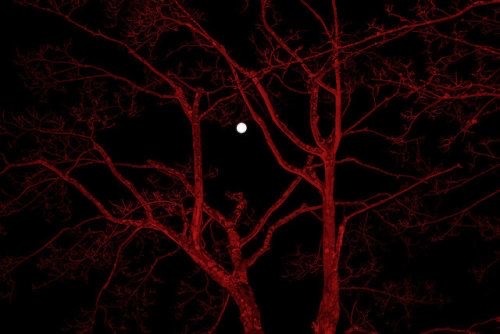



Cc: to the owner
#fyppage#gothic#darkness#late night#night sky#vampire#witchcraft#halloween#darkcore#dark moon#dark art#witchythings#vampire core#gothic aesthetic#gothcore#bats#halloween aesthetic#spooky#spooky aesthetic#full moon#foggy forest#dark core#dark sky#red sky#red and black#spooktember#lunar witch#eclipse#red moon#vampire bat
9K notes
·
View notes
Text

Stained glass depicting the Triumph of Death over the Laity, French (Normandy), ca. 1520-1530
554 notes
·
View notes
Text

Niccolò di Pietro Gerini The Execution of the Four Crowned Martyrs
Tempera on panel, 40.2 x 44.5 cm, about 1385/90
#niccolò di pietro gerini#saint#four crowned martyrs#sancti quatuor coronati#martyr#14th century#gothic art#late gothic
25 notes
·
View notes
Text


Ulrich the usurper
#artists on tumblr#illustration#digital art#painting#late gothic#historical#Friede#Tagging this as Friede because it's her son and her tragedy (Even if Belladonna is involved in his death)#I finished the sketch for my 2nd illustration in the triptych I'm making.... W
34 notes
·
View notes
Text
PALAZZO PISANI MORETTA, s.XV.
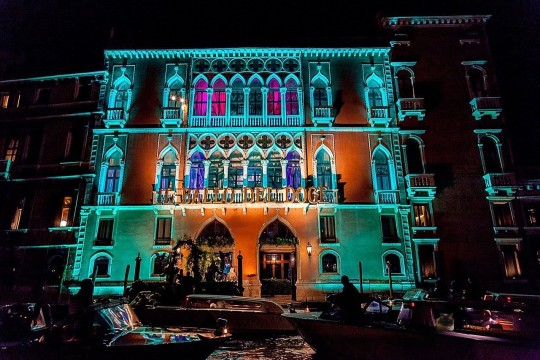
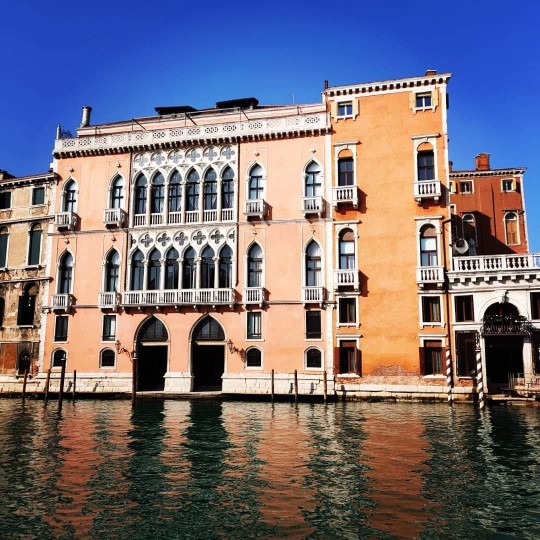
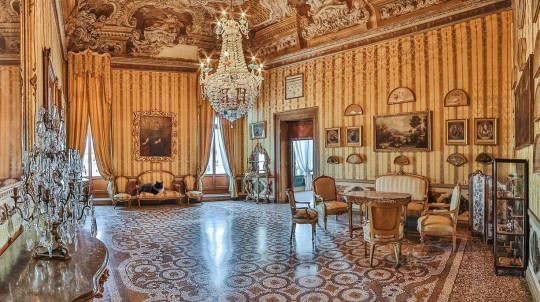
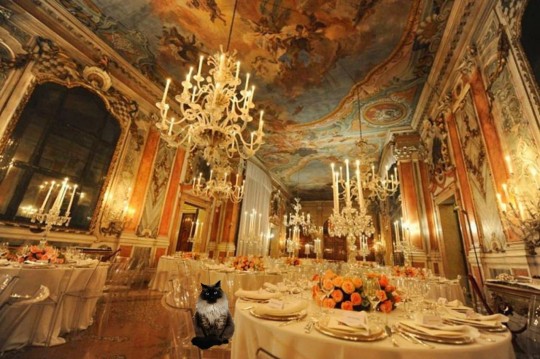
(Español / English / Italiano)
El edificio se construyó en la segunda mitad del siglo xv, por lo que se lo considera tardo-gótico. En 1629 fue residencia de una rama de la familia patrícia de los Pisani, en concreto de los Pisani Moretta,Francesco Pisani Moretta, último descendiente varón de la familia, cedió en herencia la propiedad a su hija Chiara en 1737.
Siendo Chiara propietaria se realizaron numerosas reformas, entre ellas la substitución de la primitiva escalera exterior por una escalinata interior, realizada por Andrea Tirali, y la decoración de las estancias con frescos pintados por los artistas en boga del momento. En el interior, remodelado con elementos barrocos y neoclásicos, destaca la primera planta principal, organizada en torno a una gran sala de recepción de cerca de 24 metros de longitud decorada con frescos de Jacopo Guarana y que presenta salas laterales, en dos de las cuales hay obras de Giovanni Battista Tiepolo y de Pietro Longhi.A lo largo del tiempo, el palacio ha ido pasando por diferentes manos, todas ellas vinculadas a las familias originarias, las cuales acogieron como invitados a personajes históricos como Josefina de Beauharnais o José II del Sacro Imperio Romano Germánico. Gracias a las restauraciones de los últimos tiempos y a la recuperación de sus colecciones artísticas y mobiliario original, el palacio Pisani ha vuelto a adquirir parte del esplendor del que durante siglos fue objeto.
*****
The building was constructed in the second half of the 15th century, it is considered to be late Gothic. In 1629 it was the residence of a branch of the Pisani patrician family, specifically of the Pisani Moretta, Francesco Pisani Moretta, the last male descendant of the family, bequeathed the property to his daughter Chiara in 1737.
During Chiara's ownership, numerous alterations were carried out, including the replacement of the original external staircase with an internal staircase by Andrea Tirali, and the decoration of the rooms with frescoes painted by the artists in vogue at the time. The interior has been remodelled with baroque and neoclassical elements, and the first floor is the main floor, organised around a large reception room about 24 metres long, decorated with frescoes by Jacopo Guarana and with side rooms, two of which contain works by Giovanni Battista Tiepolo and Pietro Longhi.Over the years, the palace has passed through different hands, all of them linked to the original families, who welcomed as guests historical figures such as Josephine of Beauharnais or Joseph II of the Holy Roman Empire. Thanks to recent restorations and the recovery of its artistic collections and original furnishings, Palazzo Pisani has regained some of the splendour it enjoyed for centuries.
*****
L'edificio fu costruito nella seconda metà del XV secolo ed è quindi considerato tardo gotico. Nel 1629 era la residenza di un ramo della famiglia patrizia Pisani, la famiglia Pisani Moretta. Francesco Pisani Moretta, ultimo discendente maschio della famiglia, lasciò la proprietà in eredità alla figlia Chiara nel 1737.
Durante la proprietà di Chiara furono eseguiti numerosi interventi, tra cui la sostituzione della scala esterna originale con una scala interna di Andrea Tirali, e la decorazione delle sale con affreschi realizzati dagli artisti in voga all'epoca. L'interno è stato rimodellato con elementi barocchi e neoclassici, e il primo piano è quello principale, organizzato intorno a un grande salone di rappresentanza lungo circa 24 metri, decorato con affreschi di Jacopo Guarana e con sale laterali, due delle quali contengono opere di Giovanni Battista Tiepolo e Pietro Longhi.Nel corso degli anni, il palazzo è passato attraverso diverse mani, tutte legate alle famiglie originarie, che hanno accolto come ospiti personaggi storici come Giuseppina di Beauharnais o Giuseppe II del Sacro Romano Impero. Grazie ai recenti restauri e al recupero delle collezioni artistiche e degli arredi originali, Palazzo Pisani ha riacquistato parte dello splendore di cui ha goduto per secoli.
1 note
·
View note
Text

midnight snack
#owl#midnight#photography#southern gothic#ruralcore#americana#animals#late night#rural aesthetic#rural gothic#dark#nightcore#alternative#regional gothic#american gothic#rat#barn owl#out and about#rural exploration#credits
3K notes
·
View notes
Text

Pupa ✢ The writing reads:
Time envelops and keeps me Not awake / Not asleep In this chrysalis / In this shroud I am stillborn / I am buried alive Yet I change / I am changing / And I ache Held still
I started this over a year ago and came back to it periodically, but I decided to just finally finish it. It’s morphed, undone itself, and transformed many times in the process of illustrating it. Sincerely, I considered giving up on the piece. I am glad I didn’t despite its awkwardness; I admit that it doesn’t sit in the eye well. But somehow I feel that it suits the piece and what it means.
I am, if anything, relieved to have finished an illustration finally. It’s been nearly eight months since my last. Prints are available in my shop. (I also have mini prints for $5cad/$3.40usd!)
#art#artists on tumblr#cw insect#not really but just in case lol#I have not been illustrating but I’ve been trying to stay creative despite life being really hard lately#I’ve been writing poetry and also learning how to write short stories. I’ve written quite a few!#I ran a dnd one shot that had a bunch of components to it. It was a gothic story. I designed mini games for it too.#But overall drawing has been hard. I feel like I’ve regressed. But I’m still trying#Sorry for the personal rant lol
1K notes
·
View notes